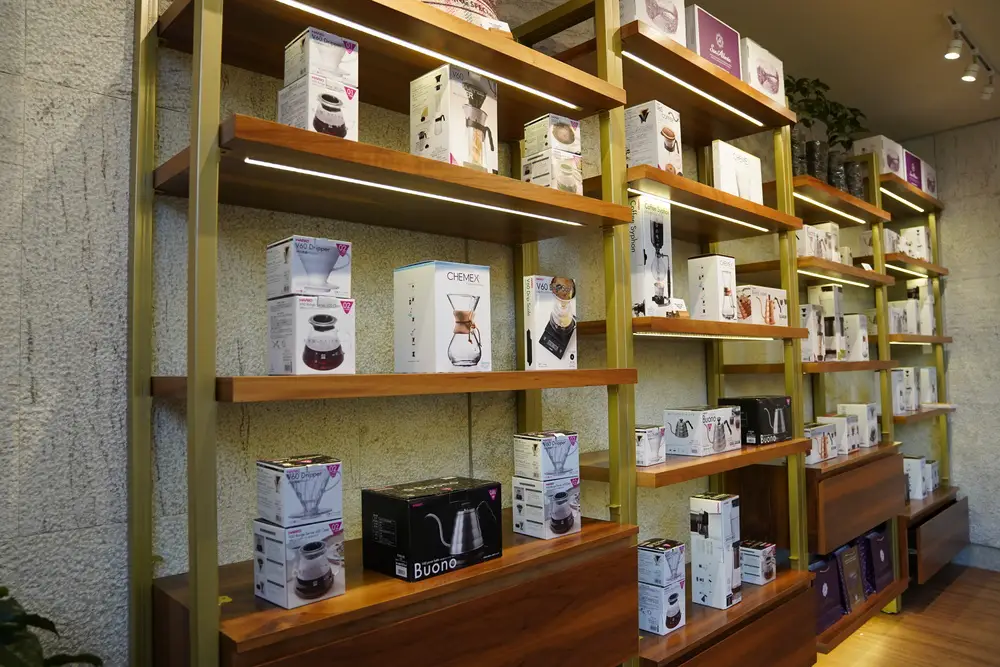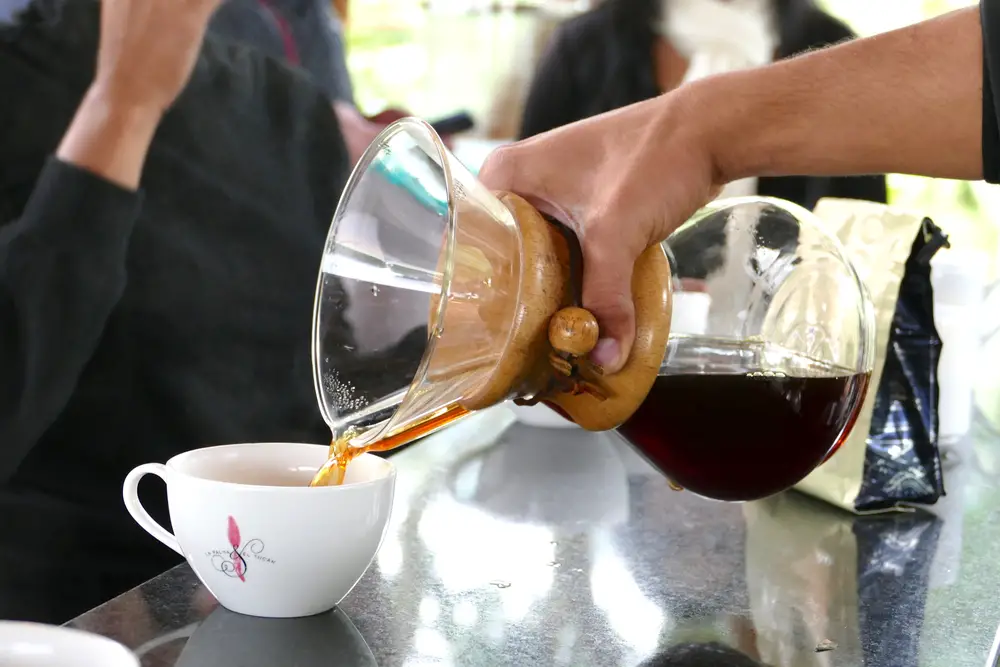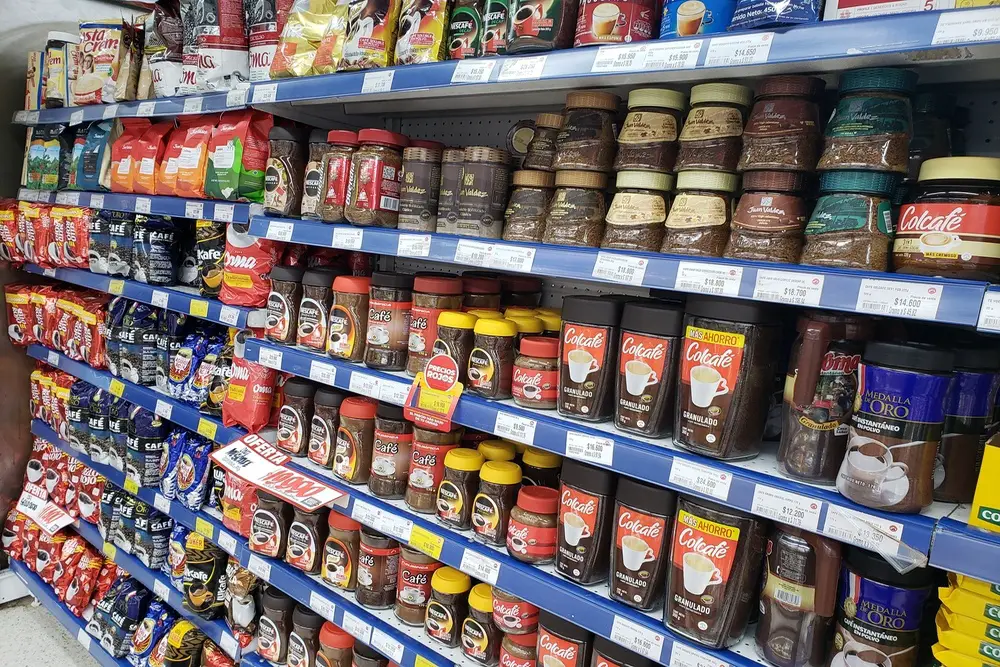When you look at your cup of coffee in the morning, you might notice a small layer of foam. Did you know that this layer is the result of a chemical reaction?
When coffee beans are roasted, CO2 gets trapped inside. From then on, the beans continuously release CO2.
Table of Contents
What is coffee degassing?
Degassing is the release of gases and other aromatic compounds from roasted coffee beans. The most important gas is carbon dioxide (CO2), which is produced along with the other gases in roasted coffee as a result of the heat-related chemical changes during the roasting process.
The largest amount of gas is released during roasting, especially in the 4 hours immediately after roasting. Carbon dioxide continues to be released from the beans for 14 days, during which time the amount of released gas slowly decreases.
If, on the other hand, the coffee beans are ground, the release of carbon dioxide increases rapidly.
When buying coffee beans from a coffee shop or specialty coffee shop, the bag usually has a built-in degassing valve. The reason for using a valve is that you don’t want these gases to stay trapped in the container forever.
This is a small plastic circle with a hole that acts as a one-way valve. Its job is to allow the carbon dioxide released by the beans to escape from the bag without too much oxygen entering from the other side.
How does CO2 affect the freshness of the coffee?
Carbon dioxide plays an important role in the quality and freshness of the coffee. It accumulates during roasting and can affect everything from acidity to extraction and flavor.
CO2 is vital to the preservation of roasted coffee beans as it acts as a “preservation layer” and prevents oxidation.
What is coffee oxidation?
Oxidation occurs when oxygen replaces the CO2 lost through degassing. This changes the components of the coffee, which often leads to a loss of aroma and the development of an unpleasant, rancid taste. Research indicates that for every 1% increase in oxygen, the degradation rate increases by 10%.
However, more CO2 does not necessarily mean that the cup tastes better. Drinking coffee immediately after roasting often results in uneven extraction due to a barrier of released gases forming between the coffee and water. This can give the coffee an astringent taste and mask its special properties.
Why is there carbon dioxide in coffee?
When green coffee beans are roasted, temperature-related chemical reactions create volatile gases within their porous structures. This enrichment increases the volume of the beans by up to 80%, most of which consists of carbon dioxide (CO2). Although some of the CO2 is released during roasting, most remains in the kernels and is released gradually during storage or more quickly during grinding and extraction.
During pyrolysis, the final stage of coffee roasting, the melting of the sugar molecules (fructose at 103° C, glucose at 146-150°C and sucrose at 186°C) releases energy and gases are formed.
After roasting, the coffee therefore retains a lot of gases, making it difficult to brew a cup of coffee right away. For this reason, the coffee should rest before use.
How does degassing manifest itself when preparing coffee?
When coffee is ground, its surface area increases exponentially, which also increases its outgassing rate. If hot water is added to the freshly ground coffee, this process is intensified.
The hot water quickly displaces the CO2 and pushes it down, creating a bubbling effect on the surface of the coffee bed. This rapid outgassing is called a bloom because it resembles the expansion of a flower. The more aggressive and long-lasting the bloom, the fresher the coffee.
Why is it important to allow flowering in coffee extraction?
The presence of CO2 and other gases prevents the water from fully penetrating the coffee beans to extract the flavor compounds from them. Allowing the coffee to bloom for 30 to 45 seconds at the beginning of the brewing process allows these gases to escape from the coffee. This removes inhibitions and allows the water to effectively extract the flavors contained in the roasted coffee.
In addition, carbon dioxide has a rancid taste. If the coffee is not allowed to bloom before brewing, the gas will give the coffee a rancid flavor.
What is the difference between degassing light and dark roasts?
Although origin, variety, and processing method have a significant impact on outgassing rate, the roast profile is the most important variable.
Light roast beans take longer to degas than dark roast beans. This is because the darker roasts were roasted longer and more gas was released during that roasting process.
Also, darker roasts tend to have small cracks that promote quick degassing. Lighter roasted beans are more intact in the degassing phase, so they take more time to break down and release carbon dioxide.
Dark roasts release CO2 much faster than light roasts: 8.5 milligrams of CO2 per gram of coffee diffusing for at least 400 hours, versus 2.7 mg/g for light roasts.
The roasting speed also plays a role. A medium roast at high speed releases 6.6 mg/g of CO2, while a slower speed releases 4.7 mg/g.
How to flower coffee
Here we explain how to make coffee flourish in different processing methods:
Flowering in pots
To brew the coffee in batches, prepare the brew as usual, pouring 40 to 80 grams of hot, unboiled water over the coffee in a circular motion. Pour in a spiral, from the outside in. Let steep for about a minute. It is important that the coffee is poured evenly without the water stagnating.
French press
To thrive on the coffee in the French Press, prepare the coarse ground coffee as you normally would and pour it into the French Press.
Pour enough hot water over the coffee to steep it, but don’t let the water level in the French Press reservoir rise too high. Bubbles should form.
Let steep and stir for 15-20 minutes. Now you can prepare the coffee as usual by steeping it with a normal amount of water for 3 to 4 minutes.
Automatic draining
To get the coffee to bloom in an automatic drip coffee maker, pour in enough hot water to allow the coffee to steep. Try not to fill the filter basket and not to cover the coffee with a layer of water.
Wait 45 to 90 seconds. You can then prepare your coffee as usual.
Cold Brew
When you put your coffee in a cold brew coffee maker, pour in some hot water first.
You know you only need enough water to soak the coffee beans, but not an entire layer of water.
Just let the water steep for about 30 seconds. After standing, you can add the right amount of cold water and let the coffee steep for 12 to 48 hours.
Blooming Factors
There are a few factors that can affect the flowering process of coffee.
- The correct water temperature should be used. Above the boiling point is usually the ideal temperature.
- The outside temperature can also have an impact, so you may need to adjust the water temperature if it’s a cold day and you’re e.g. B. want to prepare a cold brew.
- Humidity also plays a role. Dry areas allow for more outgassing than humid regions.
- Hardness of the bean is another factor that can affect flowering. The harder the coffee bean, the harder it is for the gas to escape.
Conclusion
Coffee degassing consists in allowing the coffee beans to release the gases that remain in them after roasting. If the coffee is not degassed, it can taste sour.
Also, you should store the coffee beans in a disposable valve bag for two to fourteen days after roasting. Grinding the coffee before brewing speeds up the degassing process. Also, lighter roast beans take longer to degas than darker roast beans.



